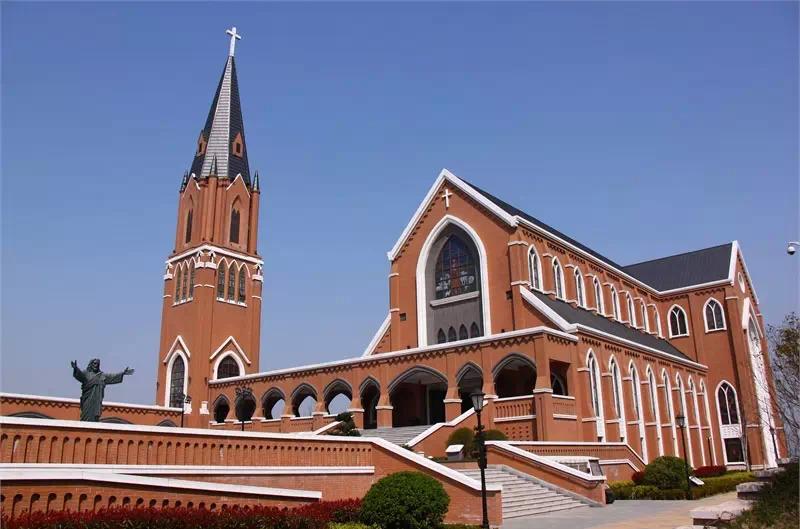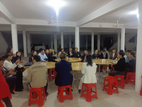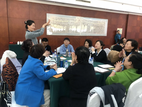Suzhou in 1863 was in chaos after the oppression during the Taiping Rebellion under the leadership of LI Hongzhang. Fearing attack, the rich and the elites of Suzhou escaped with their valuables before the Rebellion to the Foreign Settlement in Shanghai. This provided the necessary human and material resources for Shanghai's rise. Those who remained in Suzhou were the ordinary who could not afford to travel.
The population of Suzhou was about 340,000 but was reduced by 60% after the rebellion.The report of Li Hongzhang to the Emperor recorded the social situation at that time. "The bandits occupied Suzhou for several years and the cities and towns were all destroyed. The bodies of the dead who had died of starvation were everywhere in the streets. There were occasional returnees but one could not find a place to eat and or spend the night; only await help and relief"'
In addition to its infrastructure having been destroyed and the city having newly been liberated by the Emperor Army, Suzhou was not safe because it was overrun by thieves and robbers.
Therefore, it was in ruins, waiting to be rebuilt after the Taiping Rebellion.
It was not until after 1870 that missionaries again stepped onto the soil of Suzhou. By then, the city was generally stable with social order having been restored.
The first missionary was James William Lambuth from the American Methodist Episcopal Church (AMEC), who brought LIU Zhusong with him. Liu, a Chinese teacher at the American Methodist Episcopal Church in Shanghai, was baptized in 1851. He could be considered the earliest Chinese convert in the Methodist Episcopal Church. Having arrived in Suzhou, they rented rooms from YIN Qinshan to start their preaching ministry. Yin was from Suzhou and his rooms were located on Fengmen Shiquan Street in the city. He converted to Christianity in 1853.
In 1875, the AMEC missionary, Alvin Pierson Parker visited China and a year later went to Suzhou to preach. In 1877, James William Lambuth's son, Walter Russell Lambuth arrived in Suzhou to join the ministry of AMEC. Walter was born in Shanghai and went to America for schooling. After obtaining his Ph.D. in medicine and theology, he returned to Suzhou to start his ministry with his father.
Up until 1879, AMEC had built four evangelical venues in the surrounding Tiancizhuang region of Suzhou: on Shiquan Street, Hulong Street, Phoenix Street, and Stream Street. Hulong Street is now the People's Road and Stream Street is at the west end of today's Shiquan Street near Hulong Street. The evangelical venues were not the same as a church in that they were rented rooms that were then refurbished to hold gatherings.
In 1881, through the efforts of Alvin Pierson Parker and Walter Russell Lambuth, the missionaries managed to raise funds and purchased a piece of land in today's Shizi Street in Tiancizhuang to build a church for 400 people. It was the first church in Suzhou. Later on, as attendance numbers increased, the original seats became scarce. For relieving this tension of increased number of believers, the original main hall of the church was demolished in 1915 for rebuilding a church twice the size of the original with a capacity of 800. In remembrance of John Wesley, the church was given the name The John's which is now Suzhou's St. John's Protestant Church can be found at the east end of today's Shizi Street and the west gate of Suzhou University.
The Nobel Prize winner of physics, Tsung-Dao Lee's grandfather was the first Chinese minister of this church. Even today, a monument inscription about Rev. Lee is still in St. John's church.
After the Cultural Revolution, The John's church was used by The First People's Hospital until 2003 when it officially reclaimed the building to reopen for public worship.
In 1890, AMEC missionaries Thos. A. Hearn and XIANG Lie arrived in Suzhou and through their efforts, a chapel was built at No. 20 Guanqian Street Palace Lane. Because seats were scarce, the original site was extended to become a new church in 1921 and named, The Lequn Church. Suzhou University's predecessor, the Anglo-Chinese College, originated on this site.
In 1892, the AMEC built Giu Sie Methodist Church on Yangyu Lane. Of the four present-day churches built by missionaries in Suzhou that are still in use, three of them were built by the AMEC.
The missionaries who followed immediately after the AMEC were the DuBose couple from the American Presbyterian Mission (South) (APMS). They built a church on Yangyu Lane, which is today's Apostle Church. Rev. DuBose founded the Anti-Opium League in China, which after the First Opium War, urged people to reject opium. Initially, the Apostle Church was small but due to the increase in a number of attendees, was rebuilt in 1925 to its present capacity. The church is also called, the DuBose Memorial Church, in memory of its founders.
Later in 1873, a missionary from the APMS named Davis arrived in Suzhou and in 1899 founded the Qixi Church at the Suzhou Qimen Gospel Hospital.
A Southern Baptist Convention couple by the name of the Brotons completed the donation to build a church in 1883 and built the Pinghua Bridge Baptist Church in 1888.
Apart from the mentioned churches above, from 1870 when Christian ministry became the norm in Suzhou to 1919, there were 18 other churches or meeting venues. Christianity became popular during that time in Suzhou.
However, initially Christianity was not so amongst the locals and it was regarded as a cult.
The local people believed in Buddhism and folk religions. There were numerous Buddhist temples such as Lingyan Mountain Temple, Xiyuan Temple, and the famous Hanshan Temple. They were more numerous than churches. In addition, since the Three-Kingdom era, Taoism had been strong in southern China. Therefore from when they first came to Suzhou in 1870, the missionaries faced many obstacles. were the local community compact held once half a month by the Confucian gentries and the various local beliefs.
In 1886, in one of the letters to her family from the wife of an AMEC missionary was written, 'I am surprised that children in the Suzhou streets often close their eyes when they see me.' Later she learned that the missionaries were mistaken as magicians who used human eyes to make medicine and whoever take that medicine will be converted to Christianity without resistance. It is how biased the locals were to Christianity.
As time went by, the missionaries used their actions to change the locals' bias. They built hospitals and schools to allow poor children to receive education for free. Through their efforts, the local people gave up their guard against Christianity and entered the church and the Gospel. From a rejected 'oceanic religion', Christianity has become a well-received religion.
- Translated by Charlie Li













